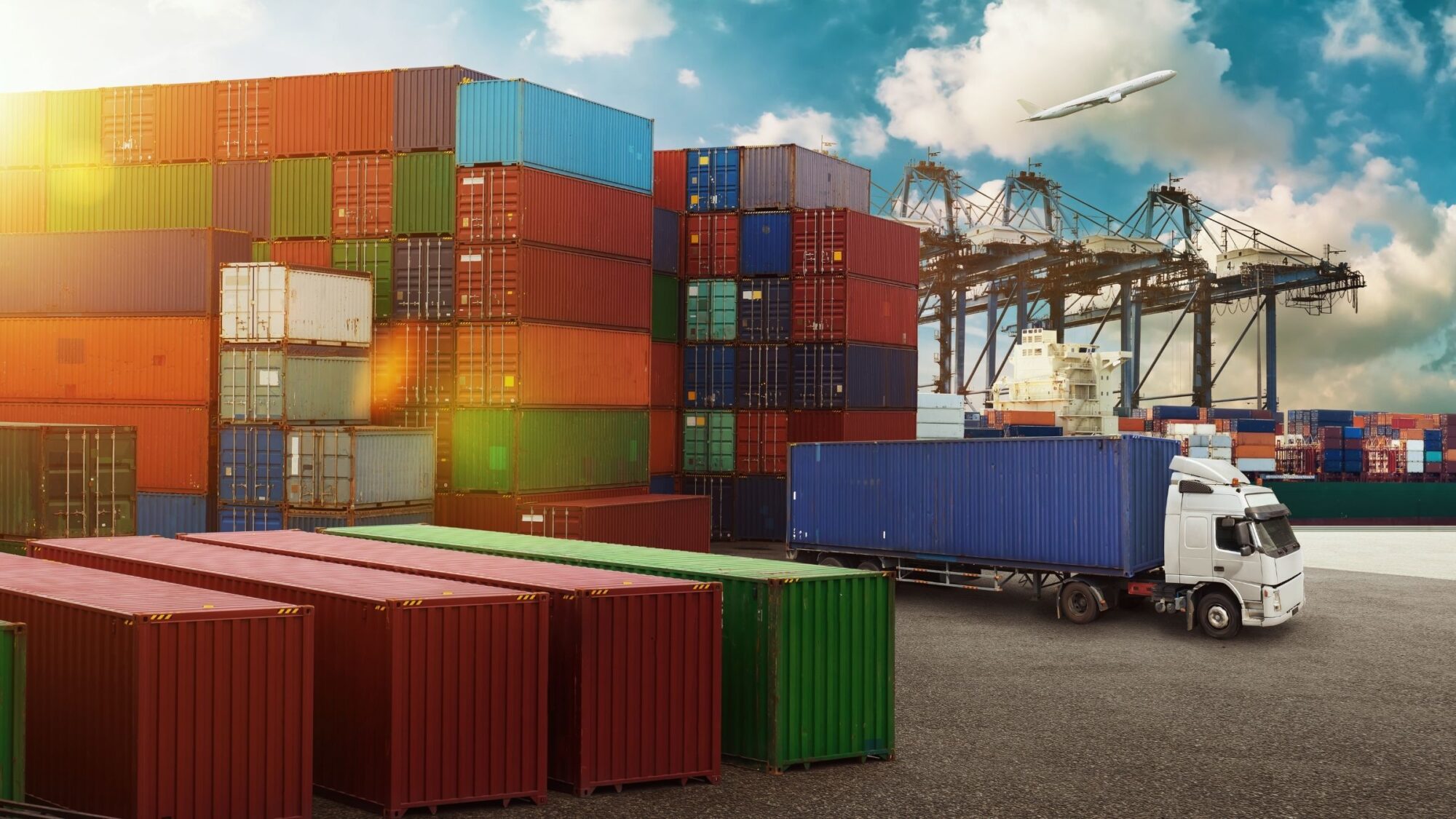
A comprehensive Supply Chain Design process that combines optimization, simulation and risk assessment will help you understand the weak-links in your supply chain, and to quickly analyze alternatives when there are profound cost fluctuations or disruptions.
Published by
Published on
May 25, 2022





Transportation rates and fuel costs have seen a lot of change over the past couple of years. The DOE national diesel fuel price is over 110% higher than in January 2021. Diesel prices dropped slightly this week to $5.57 per gallon on May 23rd 2022, but still near the record high of $5.62 on May 9th. That 16 month difference ($2.93 more for a gallon of diesel) translates to around $0.50 per mile in additional cost for your Truckload fuel surcharge, not to mention the fuel costs on your other modes of transportation. Adding to this, TL rates have also seen an increase of over 65% since 2019.
For a company shipping tens of thousands of shipments, this cost impact is in the 10s of millions of dollars!
Now that average transportation rates are coming down off record highs, companies will be shielded somewhat in 2022 from the worst-case scenario where fuel and trucking rates continue to exceed record highs. But even as transportation rates decrease, the rates are still much higher than pre-pandemic years, and the new floor for the transportation market may reset at a higher level than we’ve ever seen before. But diesel fuel prices show no signs of decreasing quickly (decreased $0.05 or 1% from record high on May 9th and 23rd 2022), and may change course and increase as the war in Ukraine and sanctions on Russia continue.
When all the supply chain disruptions hit in the past couple of years, were you able to analyze alternate scenarios and cost/serve/risk implications easily? Transportation and fuel have been increasingly volatile and sometimes at the whim of geopolitics, nature, and regulations that impact costs. Here’s a few examples (trigger warning).
Remember ‘Snowpocalypse’ in 2014 that froze Atlanta, and much of the southeast, which threw transportation rates and capacity into turmoil? And then there was a ‘perfect storm’ in 2018 of robust economic conditions (increasing demand), Electronic Logging Device (ELD) mandate (requiring drivers to more accurately log hours - reducing capacity), along with a driver shortage and increasing driver salaries that resulted in rising TL rates from 2017 into 2019.
Carriers respond to increasing demand by growing their capacity to pursue higher rates, but inevitably carriers overshoot the mark and end up with over-supply, which brings rates back down and we get back to a familiar cyclical pattern of rates and capacity rising and falling.
Now throw in a global pandemic with large swings in transportation demand and supply seen in 2020, a Russian invasion in Ukraine in 2022. And there is no shortage of external factors impacting your supply chain’s performance from a cost, service, and risk perspective. There’s no indication that this environment of change will change.
A comprehensive Supply Chain Design process that combines optimization, simulation and risk assessment will help you understand the weak-links in your supply chain, and to quickly analyze alternatives when there are profound cost fluctuations or disruptions. We’ve seen enhanced data collection and data cleaning solutions increase in usage, the advent of cloud-based advanced solvers, along with advances in hardware have enabled more frequent and robust supply chain analyses with faster solve times that provide more confidence in solutions.
Related Blog: The Convergence of Optimization, Simulation and Risk
Tying your supply chain design process to near-live data, enabled through automated workflows allows for “living” supply chain design models, where teams can collaborate on supply chain design and can ask and answer strategic questions more frequently and with less effort.
With Optilogic’s cloud-based, collaborative infrastructure and our focus on cost, service, and risk-enabling supply chain design, we’re delivering on the “living” supply chain design promise that is not solely focused on cost, but looks at service and risk as well.
We’d love to learn more about what you’re looking for in supply chain design and discuss how Optilogic’s services and solutions can enhance your current processes and unlock new capabilities within your organization. Interested in learning more? Let’s chat.
Michael Hane
As Senior Director of Business Development, Mike will grow Optilogic’s market share throughout North America and work closely with companies to define initiatives and ensure projects are set up for success. With over 25 years of experience in supply chain and transportation technology and consulting, he has gained experience throughout all facets of the industry. Mike received his Bachelors of Science degrees in Finance and Management from Virginia Tech.
Transportation rates and fuel costs have seen a lot of change over the past couple of years. The DOE national diesel fuel price is over 110% higher than in January 2021. Diesel prices dropped slightly this week to $5.57 per gallon on May 23rd 2022, but still near the record high of $5.62 on May 9th. That 16 month difference ($2.93 more for a gallon of diesel) translates to around $0.50 per mile in additional cost for your Truckload fuel surcharge, not to mention the fuel costs on your other modes of transportation. Adding to this, TL rates have also seen an increase of over 65% since 2019.
For a company shipping tens of thousands of shipments, this cost impact is in the 10s of millions of dollars!
Now that average transportation rates are coming down off record highs, companies will be shielded somewhat in 2022 from the worst-case scenario where fuel and trucking rates continue to exceed record highs. But even as transportation rates decrease, the rates are still much higher than pre-pandemic years, and the new floor for the transportation market may reset at a higher level than we’ve ever seen before. But diesel fuel prices show no signs of decreasing quickly (decreased $0.05 or 1% from record high on May 9th and 23rd 2022), and may change course and increase as the war in Ukraine and sanctions on Russia continue.
When all the supply chain disruptions hit in the past couple of years, were you able to analyze alternate scenarios and cost/serve/risk implications easily? Transportation and fuel have been increasingly volatile and sometimes at the whim of geopolitics, nature, and regulations that impact costs. Here’s a few examples (trigger warning).
Remember ‘Snowpocalypse’ in 2014 that froze Atlanta, and much of the southeast, which threw transportation rates and capacity into turmoil? And then there was a ‘perfect storm’ in 2018 of robust economic conditions (increasing demand), Electronic Logging Device (ELD) mandate (requiring drivers to more accurately log hours - reducing capacity), along with a driver shortage and increasing driver salaries that resulted in rising TL rates from 2017 into 2019.
Carriers respond to increasing demand by growing their capacity to pursue higher rates, but inevitably carriers overshoot the mark and end up with over-supply, which brings rates back down and we get back to a familiar cyclical pattern of rates and capacity rising and falling.
Now throw in a global pandemic with large swings in transportation demand and supply seen in 2020, a Russian invasion in Ukraine in 2022. And there is no shortage of external factors impacting your supply chain’s performance from a cost, service, and risk perspective. There’s no indication that this environment of change will change.
A comprehensive Supply Chain Design process that combines optimization, simulation and risk assessment will help you understand the weak-links in your supply chain, and to quickly analyze alternatives when there are profound cost fluctuations or disruptions. We’ve seen enhanced data collection and data cleaning solutions increase in usage, the advent of cloud-based advanced solvers, along with advances in hardware have enabled more frequent and robust supply chain analyses with faster solve times that provide more confidence in solutions.
Related Blog: The Convergence of Optimization, Simulation and Risk
Tying your supply chain design process to near-live data, enabled through automated workflows allows for “living” supply chain design models, where teams can collaborate on supply chain design and can ask and answer strategic questions more frequently and with less effort.
With Optilogic’s cloud-based, collaborative infrastructure and our focus on cost, service, and risk-enabling supply chain design, we’re delivering on the “living” supply chain design promise that is not solely focused on cost, but looks at service and risk as well.
We’d love to learn more about what you’re looking for in supply chain design and discuss how Optilogic’s services and solutions can enhance your current processes and unlock new capabilities within your organization. Interested in learning more? Let’s chat.
Michael Hane
As Senior Director of Business Development, Mike will grow Optilogic’s market share throughout North America and work closely with companies to define initiatives and ensure projects are set up for success. With over 25 years of experience in supply chain and transportation technology and consulting, he has gained experience throughout all facets of the industry. Mike received his Bachelors of Science degrees in Finance and Management from Virginia Tech.
Fill out the form to unlock the full content


